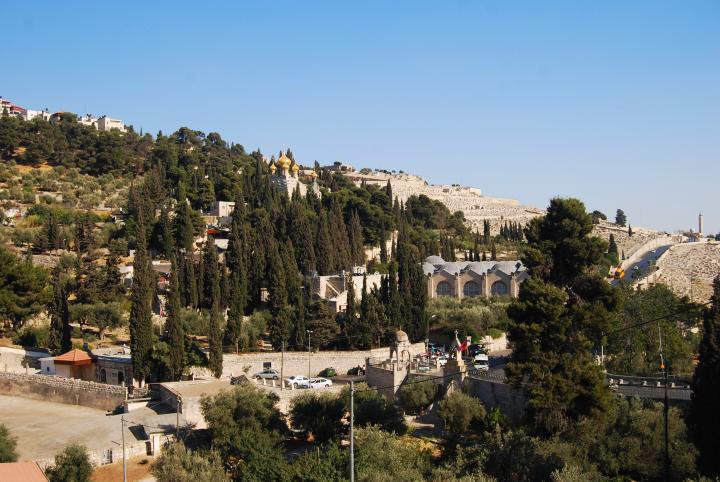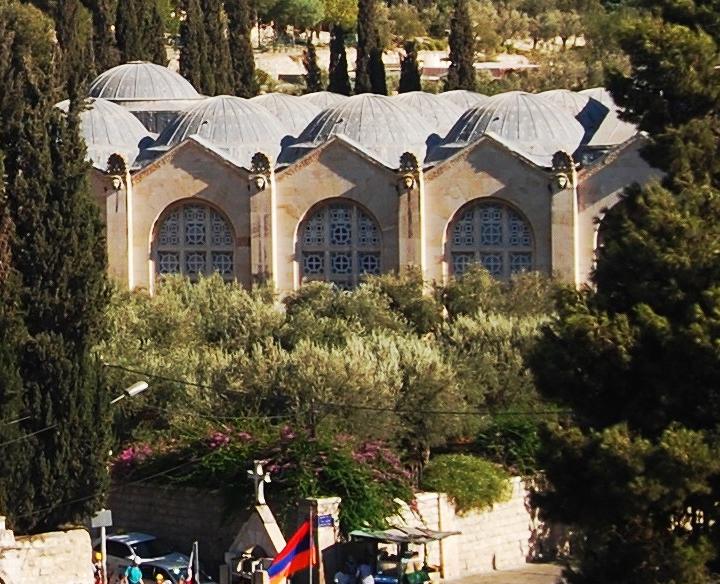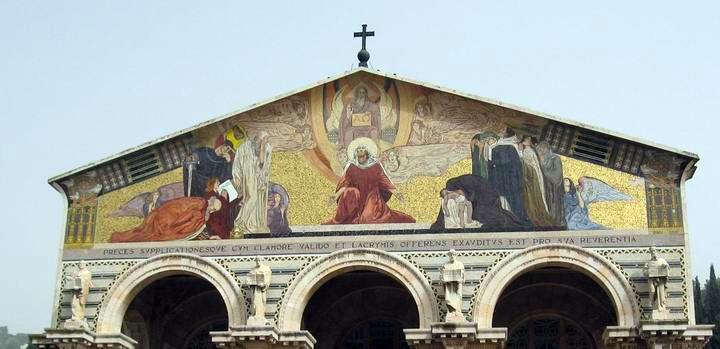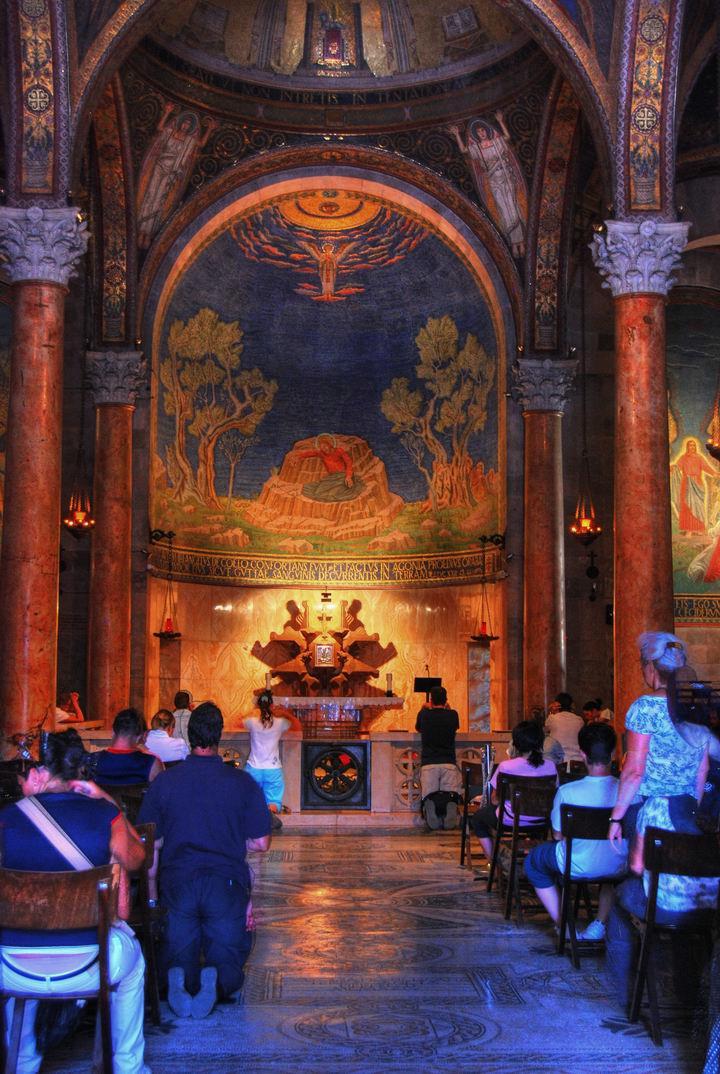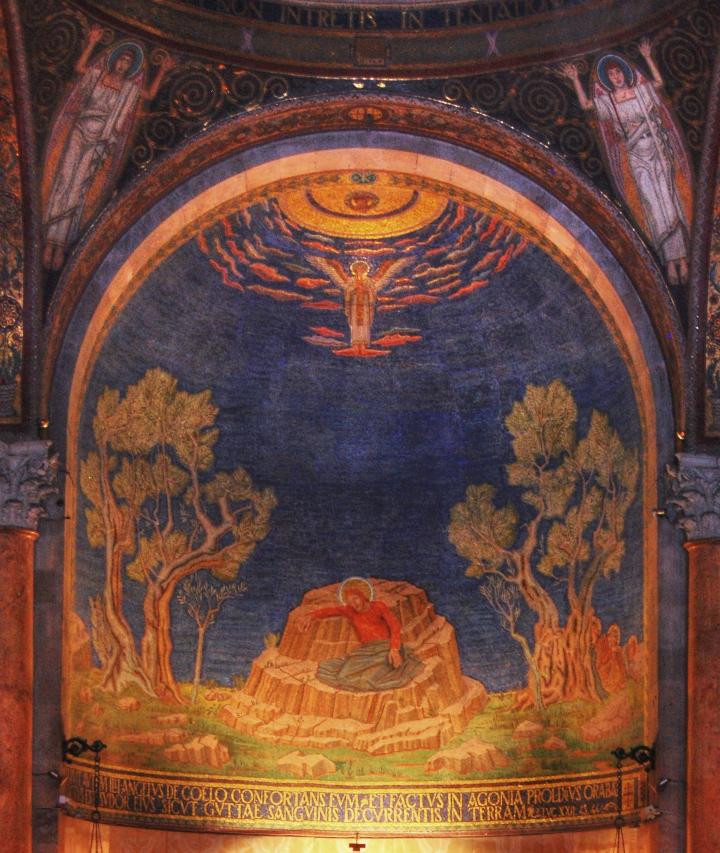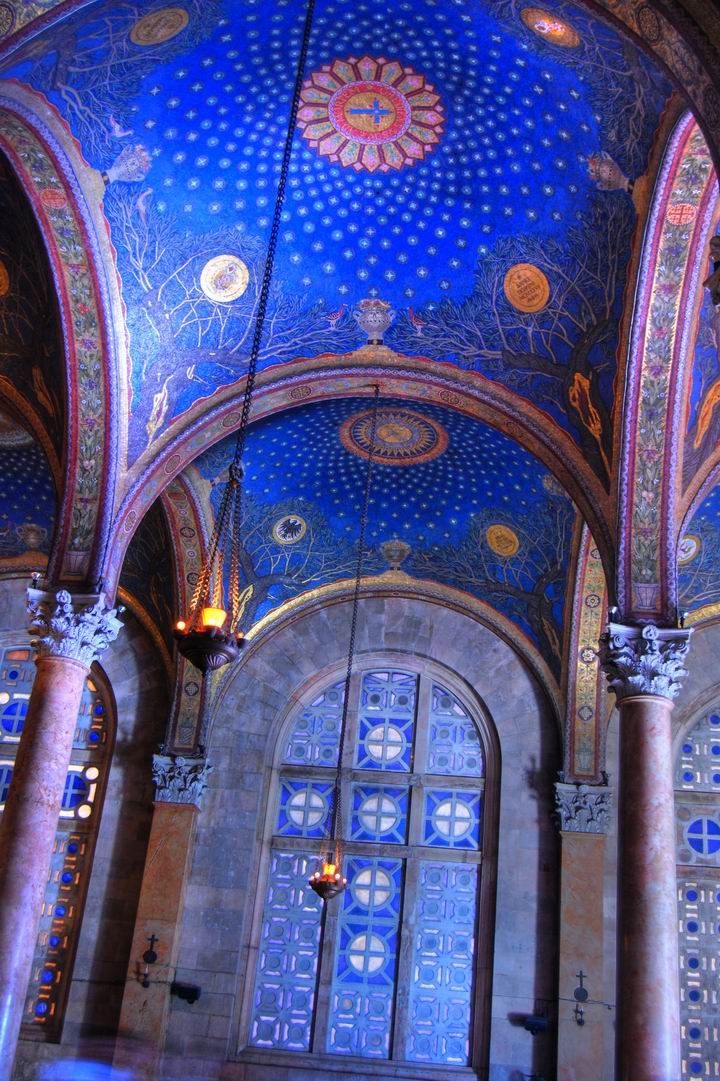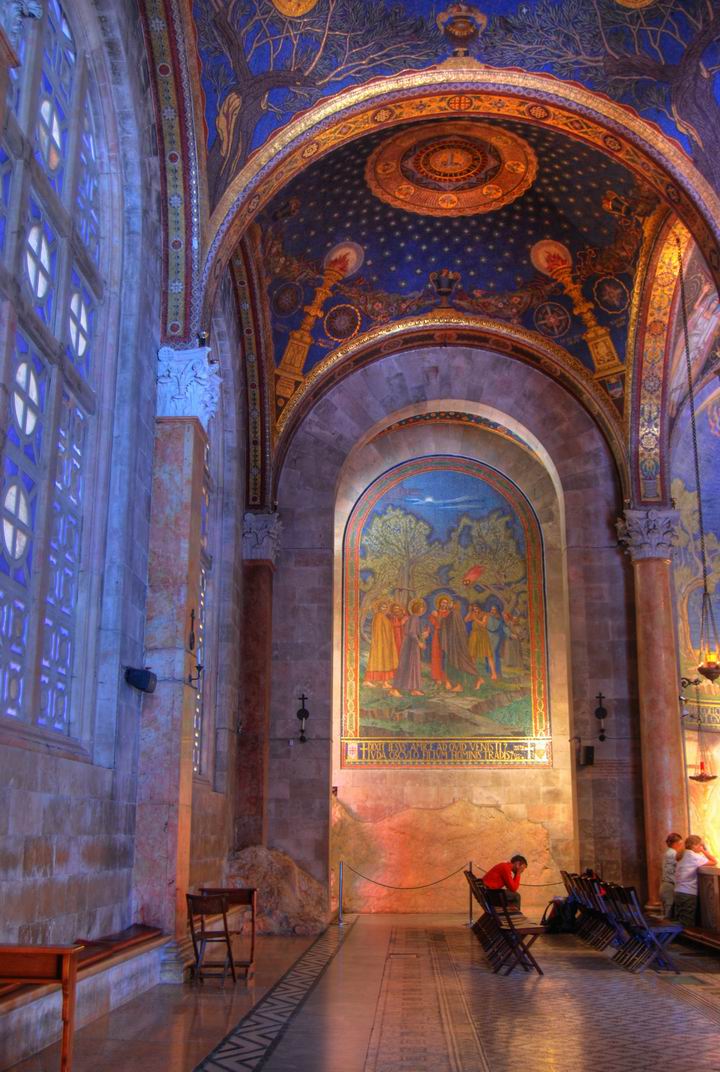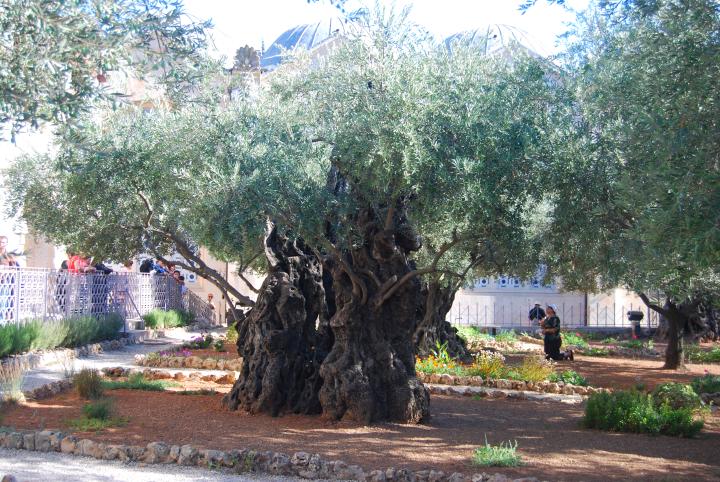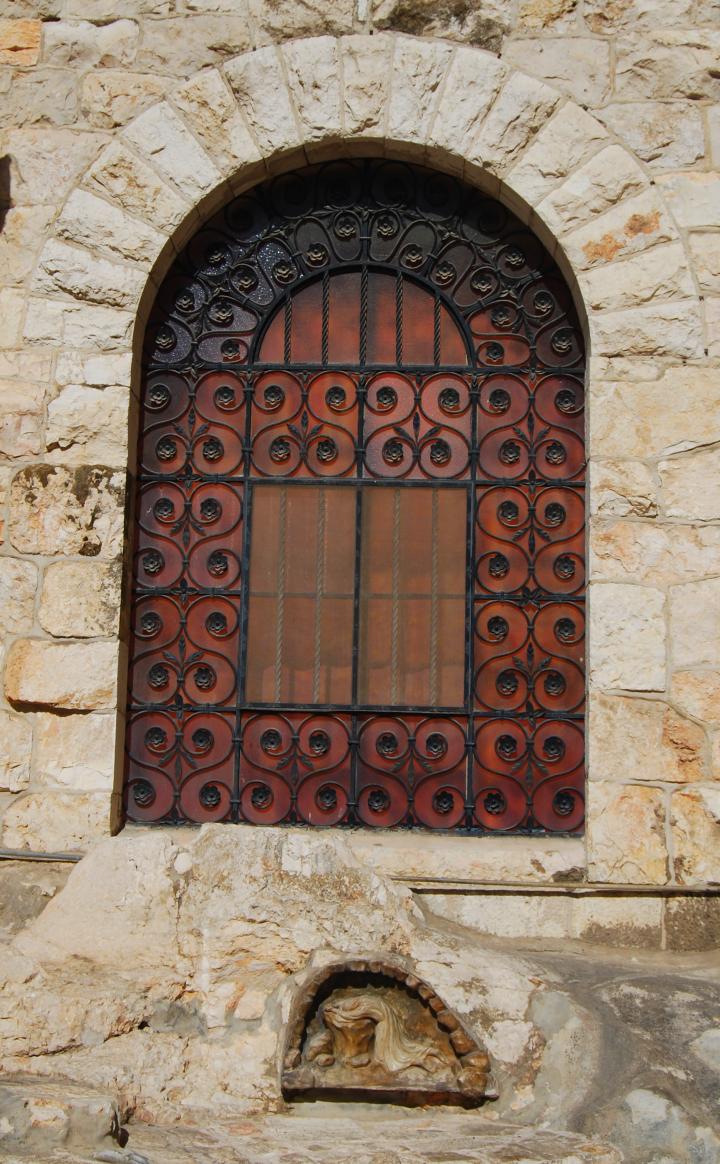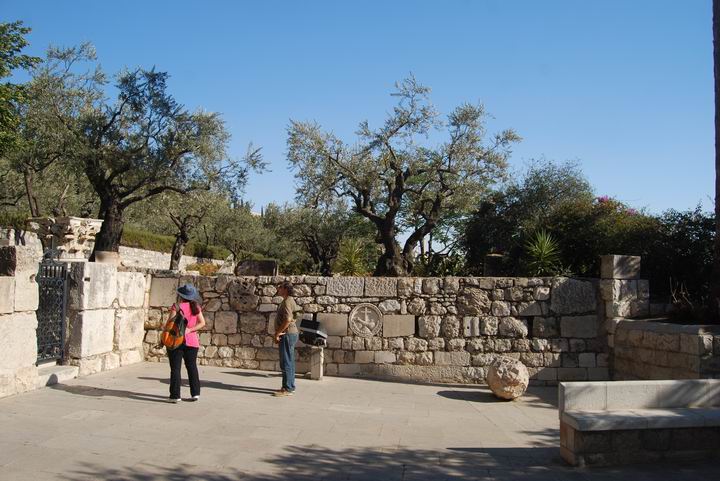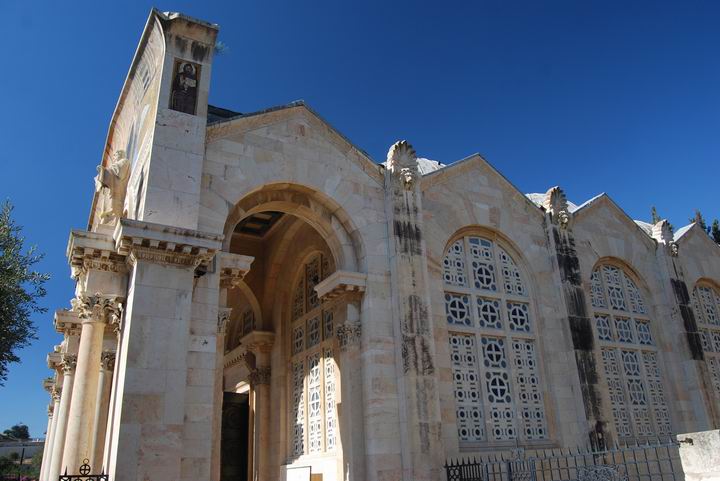-Рубрики
- Европа (2432)
- Города России (1050)
- Азия (860)
- Города СНГ и Балтии (549)
- Москва и Подмосковье (464)
- Ближний Восток (411)
- США (296)
- Африка (200)
- Питер и окрестности (143)
- Китай (138)
- Кавказ (136)
- Япония (102)
- Дальний Восток (93)
- Южная Америка (81)
- Австралия (63)
- Канада (50)
-Подписка по e-mail
-Поиск по дневнику
-Статистика
Записей: 7585
Комментариев: 23378
Написано: 26026
Базилика Агонии в Иерусалиме и Гестиманский сад |
Basilica of Agony
Базилика Agony
Католическая церковь францисканского, одного из самых величественных церквей в Святой земле. Это место, Гефсиманский на подножия Елеонской горы, была местом, где Иисус был его последней молитве, прежде чем он был предан и арестован.
Марк 14: 32: "И они пришли на место, называемое Гефсимания, и Он сказал ученикам Своим: посидите здесь, пока Я помолюсь".
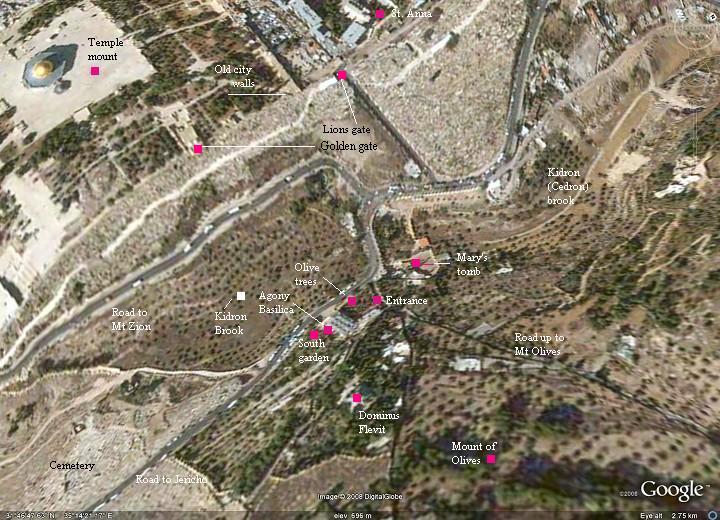
There are no references to Gat-Shemanim (Gethsemane) in the old testament, but the olive presses were probably in this site from previous periods, in order to process the olives of Mount of Olives.
The Mount of Olives is first referred in the Bible when King David flees the city. King Solomon erected altars on the hill dedicated to false alien gods. They were later destroyed by King Josiah who "filled it with bones" to prevent future worships. Prophet Zechariah talks about the day of Judgment, with Mount of Olives its epicenter of God's fiery fight against the enemies of Jerusalem.
Gethsemane is the Greek form of Gat Shemanim, and it is where Jesus had his last prayer before he was betrayed and arrested by the Romans. According to the texts, Jesus and his disciples came to the site in this garden "beyond the Kidron (cedron) brook", and Jesus prayed alone. Judas (Judah) knew this hiding place from previous times, and gave its position to the Romans. Jesus was apprehended at night (as per John), and led to a Jail within the city.
In the 4th C a church was constructed at this place, but was destroyed by the Persians in 614AD. It was rebuilt by the Crusaders in the 12th C, but was destroyed again by the Arabs in 1187.
The Basilica of Agony - "Church of all nations" - is located on the lower foothills of Mount Zion, close to the Kidron brook. The photo below is of the western side of Mount of Olives, and the church is in its center.
Click on the photos to view in higher resolution...
A close up of the church is seen below. The Basilica's roof has 12 grey capes. Before the church is the grove of the ancient olive trees.
Entrance:
The entrance to the complex is on the north side, which opens to the north garden. The title reads "Hortus Gethsemane" - the garden of Gethsemane.
Above the name of the church is the symbol of the Franciscans, the custodians of the Holy sites. Their symbol is a large cross with four crosses on each of its corners. This symbol was the Crusaders sign of Jerusalem, and was adapted by the Franciscans. The 5-cross symbol is based on the 5 Holy wounds of the crucifixion of Jesus (2 in the hands, 2 in the legs, and one in the chest).
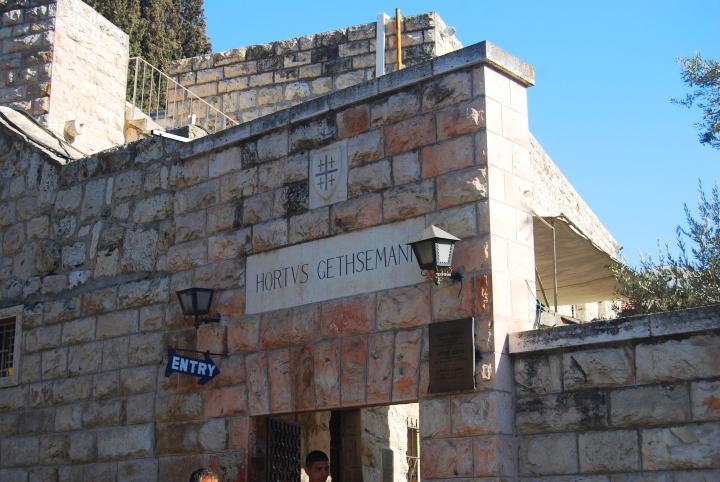
(b) Front side mosaics
The photo below shows the view of the front of the church, as seen from the road. This road follows along the Kidron valley from Jerusalem to Jericho.
The colorful front mosaic depicts the story of Gethsemane, showing Jesus in the center weeping over the future fate of Jerusalem - the destruction of the city by the Romans (which actually happened 40 years later) .
Details of the mosaic are described below.
Inside the Church:
The photo below shows the main altar inside the basilica, which faces the east. The painting illustrates the moment when Jesus secluded in his prayer, on the Holy rock, and flanked by the olive trees.
A closer detail of the agony of Jesus is seen in the photo below. Jesus is seen weeping on the rock between the olive trees, after visualizing the ruin of Jerusalem and observing the ignorance of its citizens of the events to come.
On the floor of the hall lays a flat rock. According to tradition, this is the Holy rock of agony, where Jesus conducted his prayer.
In the ceiling are 12 capes, each dedicated to one of the nations that contributed to its construction. Their seals are located on the corners of the capes.
A view of the northern side is seen below. The painting illustrates the story of the prayer in the garden and the betrayal: Peter, John and James are seen on the left side, since they waited nearby while Jesus prayed. The priests and soldiers and the torch holder are on the right side. Judas is seen kissing Jesus on his cheek, a sign for the Roman soldiers to pick him up. The Latin text under the painting is from Matthew 26:50 ("And Jesus said unto him, Friend, wherefore art thou come? Then came they, and laid hands on Jesus and took him.") and Luke 24: 7 ("The Son of man must be delivered into the hands of sinful men, and be crucified, and the third day rise again.").
The North Side:
In the north side of the church is a garden with several ancient and large olive trees, perhaps the descendents from the original olive trees from the times of Jesus.
There are several other ancient olive trees trees in the garden, as seen in the photo below.
An interesting detail is seen below. This window is on the western side of the north wing.
The south side:
On the south side of the church is another garden, seen below.
The photo below shows the south side of the basilica, as seen from the south garden.
biblewalks.com
| Рубрики: | Азия Ближний Восток |
Процитировано 1 раз
| Комментировать | « Пред. запись — К дневнику — След. запись » | Страницы: [1] [Новые] |
